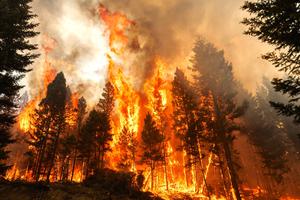Climate change will significantly increase the incidence of severe turbulence worldwide — as much as tripling it in some spots — by mid-century, resulting in much bumpier flights and a rise in costly in-flight injuries, according to a new study published in the journal Geophysical Research Letters.
At a typical cruising altitude of 39,000 feet, the study found severe turbulence will be 180 percent more common over the North Atlantic, 160 percent more common over Europe, 110 percent over North America, 90 percent over the North Pacific, and 60 percent over Asia.
“Air turbulence is increasing across the globe, in all seasons, and at multiple cruising altitudes,” Paul Williams, an atmospheric scientist at the University of Reading in the U.K. and lead author of the new study, said in a statement. “This problem is only going to worsen as the climate continues to change.”
The Southern Hemisphere will also experience an increase, though less than in the Northern Hemisphere. The skies over South America will experience a 60 percent increase in severe turbulence, Australia 50 percent, and Africa 50 percent.
Turbulence, also known as “clear-air turbulence,” happens when bodies of air moving at different speeds collide, and when there’s no visual indication of this collision, such as from clouds. It is often created by weather fronts, jet streams, or as air moves around mountains. Severe turbulence is defined as being strong enough to throw people and luggage around a plane’s cabin.
As global temperatures increase due to climate change, that will intensify wind instabilities at high altitudes, such as in jet streams, and make pockets of rough air stronger, the study said.
“The study is another example of how the impacts of climate change can be felt through the circulation of the atmosphere, not just through increases in surface temperature itself,” said Manoj Joshi, a climate scientist at the University of East Anglia in the U.K. and co-author of the new study.


